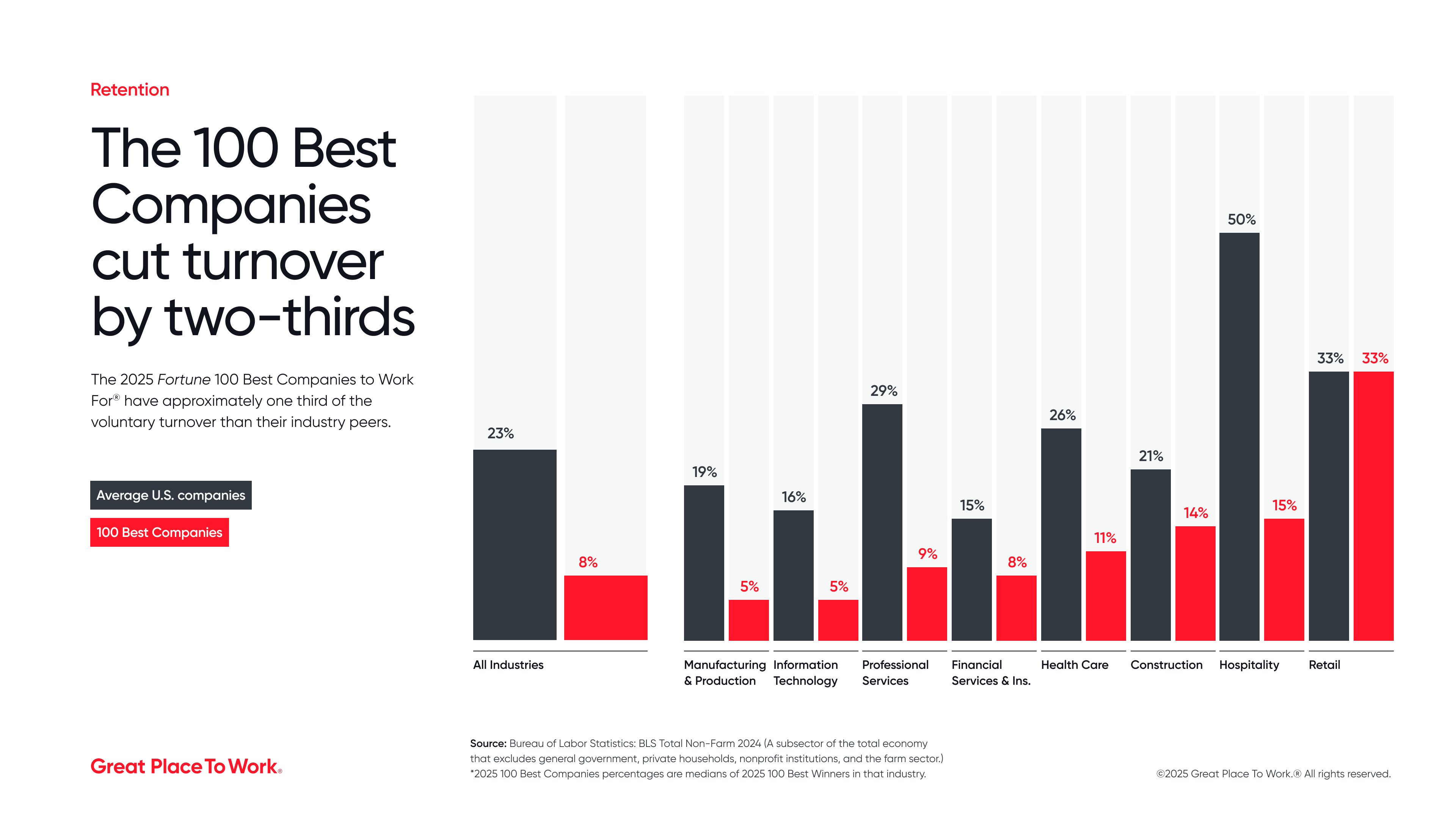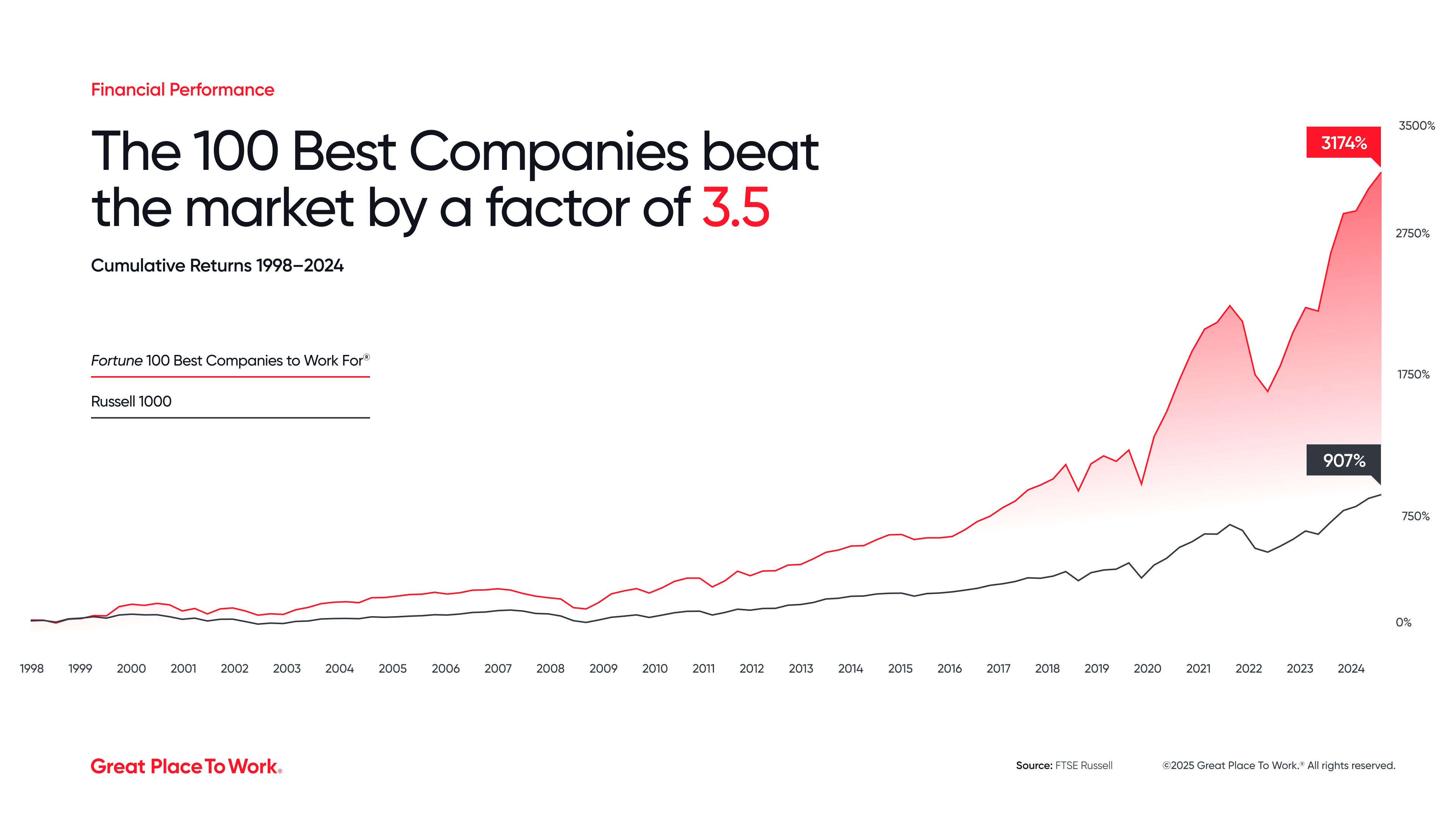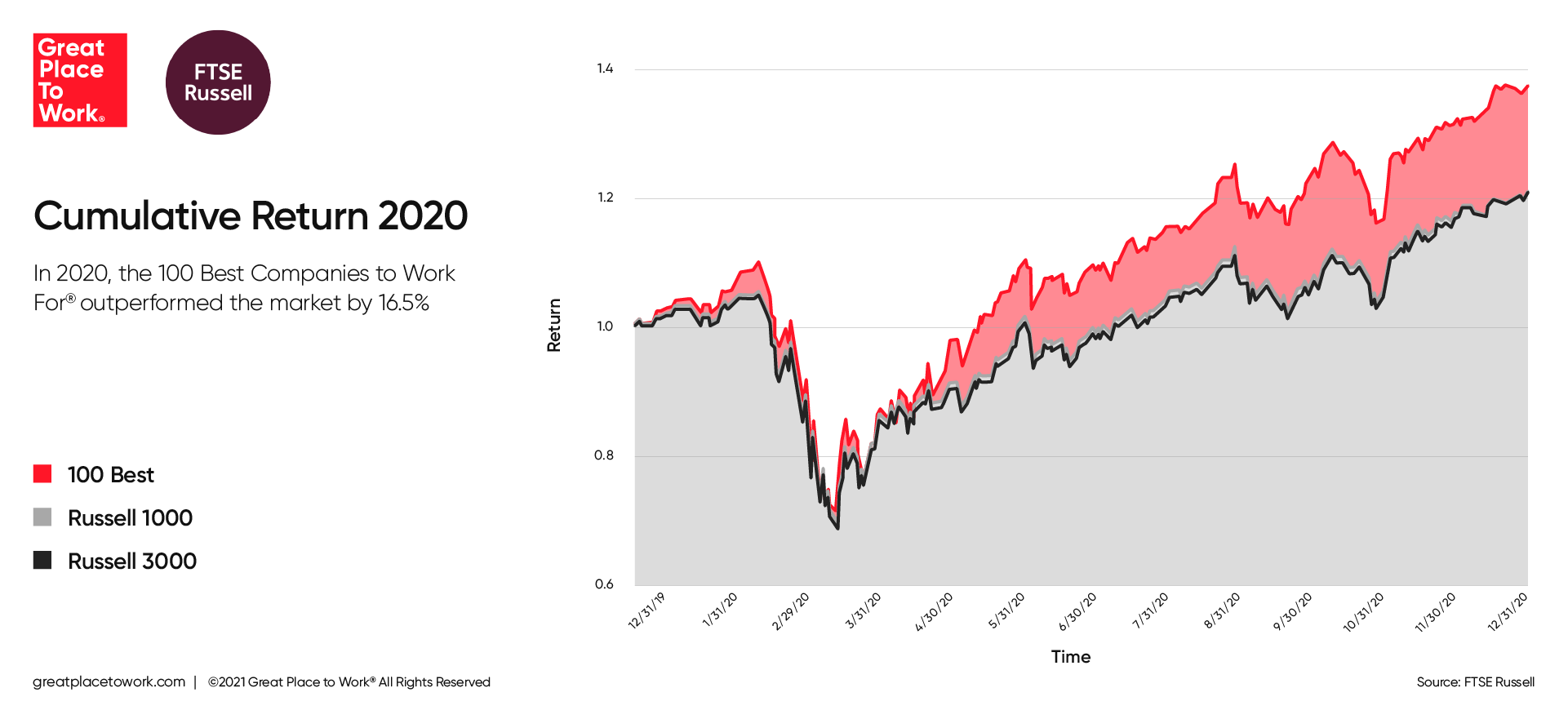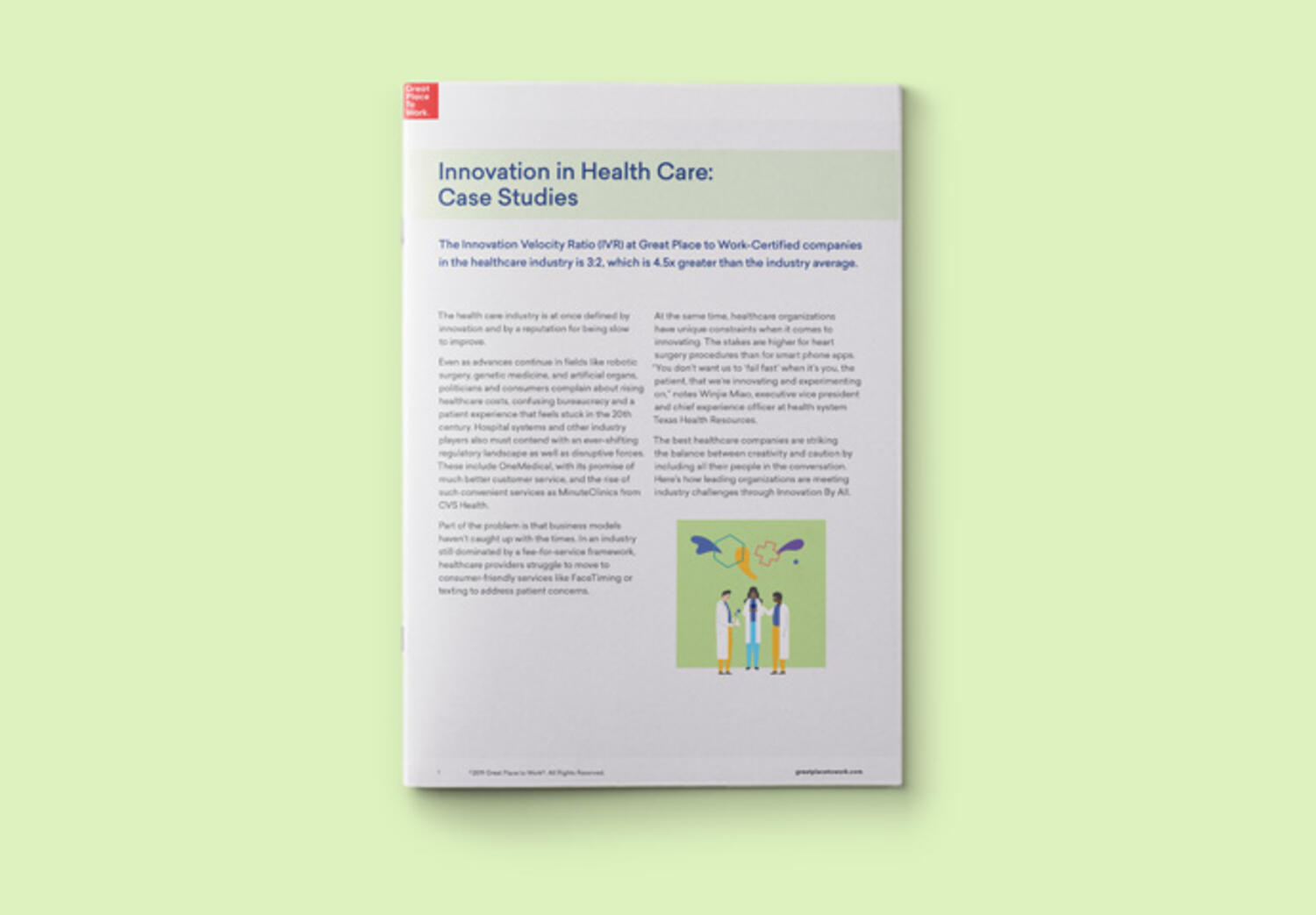Benchmarks & Trends, Benefits of Company Culture, Best Workplaces
Here’s what investors should consider about the employee experience.
Companies that make the Fortune 100 Best Companies to Work For® List consistently outperform the market by 3.50 times, over a 27-year period, according to FTSE Russell, the global index and data provider.
FTSE Russell looked at decades of market data and developed a hypothetical index using companies that make the annual 100 Best list compiled by Great Place To Work® since 1998. FTSE Russell analyzes the annual returns of the publicly traded companies on the list and compares those results to other market benchmarks.
The result? If you had invested in 100 Best Companies, you would more than triple what a similar investment might have earned in another portfolio.
“As a general rule of thumb, if you can outperform by 2% to 3%, that's considered quite noteworthy,” says Ryan Giannotto, manager of equity index research at the London Stock Exchange Group, which produces the Russell 1000, an index of the biggest U.S. stocks.
“A cumulative 27-year outperformance factor of 3.50 is incredible. This analysis gives credence to the contention that employee experience contributes to market returns.”
While backwards looking data is no guarantee of future market success, the research offers a compelling case for considering the employee experience in an investment strategy. Just one year of overperformance might not tell investors much, but 27 years of performance demonstrate a proven pattern.
“This is why investors do not look at just a one-year return,” Giannotto says. “They look at a comprehensive history of return because they want to see how a company performs in different market conditions.”
Even more impressive, the 100 Best benchmark overperforms without relying on the Magnificent Seven, companies that include Meta, Google, Apple and others, and that are responsible for most of the top-heavy growth in the market. “For the 100 Best to get competitive market returns without all those trillion-dollar market cap company names is very impressive,” Giannotto says.
The value of company culture
What are the metrics investors can use to understand if a company has thriving employees and a high-trust culture?
Companies that routinely make the 100 Best list have some common characteristics that offer helpful guideposts. Here are some of the metrics that set the best companies apart, according to Great Place To Work analysis:
1. Employee retention
Companies on the 100 Best have two-thirds less turnover compared to the Bureau of Labor Statistics average. While the gaps are more meaningful in some industries compared to others, the overall trend is for high-trust workplaces to hold onto more of their workers.

Even when faced with layoffs, companies need to hold onto their best employees. When employees leave the company, they take their relationships, institutional knowledge, and future contributions with them. That’s why employee retention is an important indicator of future company performance.
2. Employees’ psychological and emotional health
At the 100 Best, 81% of employees report a healthy workplace, compared to just 56% at typical U.S. companies, a difference of 45%.
When you don’t have a healthy work environment, innovation and productivity suffers. Psychological safety, or how employees feel about taking risks in the workplace, is a key element of an innovation culture.
Investors might want to consider how a company is creating a culture where employees can generate new ideas, develop new skills, and push themselves to new levels of performance.
Great Place To Work research found that employees are twice as likely to want to stay in their job when they have a psychologically healthy workplace. They are also three times more likely to recommend your workplace to others, according to a survey of 1.3 million U.S. employees, helping attract the talent you need to solve the toughest business challenges.
Well-being even has a proven impact on core drivers of business performance, such as customer service. Employees are 48% more likely to say their company offers excellent customer service when they also have high levels of well-being.
That indicates a potential competitive advantage for investors who identify companies that are giving their employees space to thrive outside of work.
3. Discretionary effort
Performance matters, and the great companies on the 100 Best list are no exception. At the 100 Best, companies on average have revenue per employee that is 8.5 times higher than the U.S. market.
But it matters how you get that performance bump.
These companies have found ways to get more from their workers by investing in their growth and development — and then reaping the rewards. Eighty-five percent of employees at the 100 Best report giving extra effort at their job. Only 60% of workers say the same at a typical workplace.
The stock market gains of the 100 Best over 27 years prove the value of a long-term approach to productivity and performance. The companies on the list can boast sustained performance because their workforce strategy is sustainable.
When evaluating the health of a company, it’s crucial to get employees’ perspective.
Are workers really invested in the company’s mission and bringing their full set of unique gifts to bear on behalf of their organization? Or, are those productivity numbers just smoke and mirrors that mask a deeply unhealthy culture — where employees cut corners, fudge the numbers, and fail to report errors in fear of retaliation?
If you listen to employees, you’ll get a different data set on the health and potential performance of a company.
Whether or not you use that data to guide your investment strategy? That will be up to you.
See how your company performs
Get started with Certification™ to see how your employees are contributing to the bottom line.
Note: Returns shown are hypothetical and for analysis purposes only. Past performance is no guarantee of future results. Charts and graphs are provided for illustrative purposes only. Index returns shown may not represent the results of the actual trading of investable assets. Certain returns shown may reflect back-tested performance. Back-tested performance is not actual performance, but is hypothetical.











